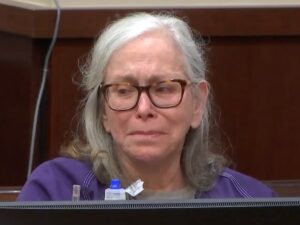A lengthy battle has been fought between the California Department of Corrections and Rehabilitation (CDCR) and the federal Receiver, Clark Kelso. Long before Brown v. Plata, Judge Thelton Henderson placed the entire prison medical system in the hands of a federal receivership. There has been some noticeable improvement (some investigating reporting revealed mixed results), but the court, deciding that overcrowding in prison impeded more improvement, kept the receivership in place while ordering the State to decrowd prisons. The State has been repeatedly asking the court to end the receivership and criticizing the Receiver’s spending; the Receiver has consistently asked to sever health care from CDCR. And, as of yesterday, this is officially NOT OVER. The Los Angeles Times reports:
In an order issued Wednesday, U.S. District Judge Thelton Henderson said he would require tougher reviews than the state wanted before agreeing to dissolve the receivership that has run inmate medical care for six years.
“Evidence of progress made under the direction and control of the receiver does not constitute evidence of [the state’s] own will, capacity, and leadership to maintain a constitutionally adequate system of inmate medical care,” Henderson wrote. California officials have “not always cooperated with, and have sometimes actively sought to block, the receiver’s efforts.”
Would Judge Henderson be more willing to bring the Receivership to an end if the state seemed more ready and willing to comply with the population reduction order, which it now seeks to change? For the court, quality of services is inexorably tied to prison population. But if services improve as population dwindles, is that evidence of the state’s ability to provide quality health care, or a testament to the Receiver’s efforts?
But there’s more here. This is interesting to me because the debate over the quality of prison health care has drawn attention to a special population of inmates: The old and the infirm.
In their 1992 article The New Penology, Malcolm Feeley and Jonathan Simon speak of a change from a correctional regime that aspired to deter or reform inmates to a managerial, actuarial, risk-management regime that merely aspires to efficiently warehouse inmates. This regime is characterized, in part, by “selective incapacitation” – creating a continuum of institutions to house people according to the risk they pose.
I submit that we still classify and categorize inmates, but these days our attention focuses on a slightly different criterion for incapacitation: Cost. Where our legislative energy has focused on groups we deemed, justly on unjustly, to be dangerous (like sex offenders and habitual offenders), we now consider the expense involved in incarcerating groups of people. This has been evident in the dynamic of incarcerating juveniles vs. adults, and it has also been evident in our approach toward Three Strikers. The latter are, in fact, a fairly small percentage of the prison population (about 8,000 inmates in total), but they have spent a long time in prison, and are old and sick. This is important because a stunning percentage of California’s correctional budget is spent on health care. Several states have considered, and enacted, provisions for geriatric parole (CA has done so most recently in jails as well.) The use of GPS tracking devices for ill inmates has become more prevalent. And, while members of the notorious Manson family still hold symbolic, horrified fascination that would impede their release even if they are very old and sick, we are more open to considering such solutions.
The intense battle between CDCR and the federal Receivership is an indication of the immense difficulties of administering passable health care to a large population, and as no end is in sight, legislature might need to think more seriously about handling its old and infirm prison population.
————
cross-posted to PrawfsBlawg.




No comment yet, add your voice below!